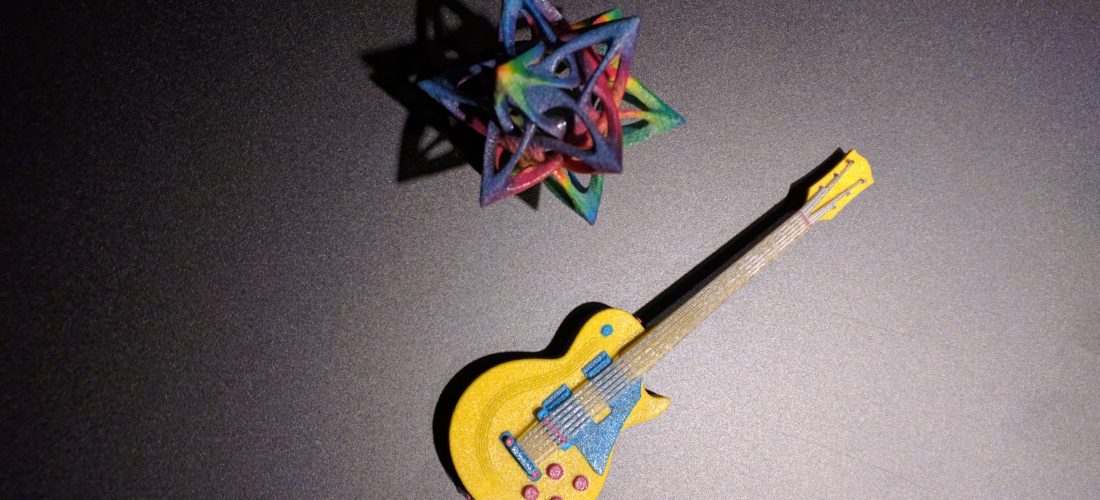Yesterday, The Huffington Post published an article from Peter Diamandis about 3D Printing & Technology Convergence. While I respect Peter and Avi Reichental as innovators in their respective fields, I feel compelled to disagree with several of their points.
But, let’s start with where we do agree. Peter starts his article with this:
“An expert might be reasonably good at predicting the growth of a single exponential technology (e.g. 3D Printing), but try to predict the future when A.I., Robotics, VR, Drones, and Computation are all doubling, morphing and recombining… You have a very exciting (read: unpredictable) future.”
I’ll agree with that statement wholeheartedly. In fact, virtual reality and 3D printing both use similar types of input (3D renderings). The main difference is in the output. Would you like that as a virtual experience or physical product?
I also think Avi’s point about speed is spot-on. New technologies like those being touted by HP, Carbon and others do show amazing promise. But, I think other machine specifications, like build area, are equally important. When people think of larger size machines, they immediately think of larger parts. One of the key learnings in 2D was that a larger print area could also allow you to create lots of small pieces in one pass (gang runs).
It comes down to economics. Even though the cost of acquisition is much higher, the productivity of a large machine generally equals lower cost. I think we’re a few years from that type of throughput.
Here’s where we start to disagree:
“Today we can 3D print in full color and in over 250 different materials ranging from titanium to rubber, plastic, glass, ceramic, leathers and even chocolate.”
First, from a numbers standpoint, arguably the best source of information is the Senvol database. It tracks, among other things, the number of printers and substrates available for 3D printing. It currently lists over 550 different 3D printer models and over 725 substrates available for printing.
My real problem with the statement though, has to do with 3D printing in full color. Today, there are basically 3 ways to do it:
- The first is in sandstone (or plastic) using a powder-based process. The technology typically uses Cyan, Magenta, and Yellow only, creating blacks from those other colors (process black). In my experience, the color pallet with these technologies is pretty limited (about 650 colors vs. over 4,000 Pantone colors).
- The second is a resin-based approach favored by Stratasys with their Connex3. The machine also allows for 3 colors, plus support material. It can also vary the properties of a material, allowing both rigid and flexible surfaces. But, it will only hit about a fifth of the color spectrum in one print. You can have pinks, reds, and whites, or blues and greens, but not all colors simultaneously.
- The third is via the MCOR machines. They “print” using plain old paper. Sheets (or pinfed rolls) of paper are inserted into the machine, where they are digitally die-cut, and stacked on top of one another to create a physical object. Then, they can be sprayed with four color inkjet to achieve the affect.

As I’ve written many times, I think full color is one of the major hockey stick drivers of 3D printing. Most of the mass produced products we use are decorated in some way. Digitally manufactured products must follow suit.
Top Breakthroughs 2016–2018
I just wrote an article where I quoted MakerBot CEO, Jonathan Jaglom saying:
“If you ask me, five to seven years from now, I really do believe there will be a printer in every person’s home,” he said. “And we’re gonna work to get to there.”
Most of the estimates I’ve seen show the industry selling maybe 5 million printers annually by then. There are 100+ million households in the U.S. alone.
Which makes this statement (by Avi) a bit hard to swallow:
“At the end of the day, your home food printer will create a personalized nutrition bar based on your needs in that moment, containing the amount of proteins, carbs, vitamins and supplements needed in that moment.”
I don’t really think this will happen in practice, even for a small minority of people, by 2018. Now institutionally? That’s a different story.
The next prediction has to do with 3D printed shoes and apparel. I see the opportunity, but real issues lie in HOW all those people’s measurements will be scanned and WHERE there products will be manufactured and sold. Since almost all apparel is sold at retail today, you have to assume they are part of the solution. So far, that’s been slow to materialize.
The last I’ll mention is 3D printed body parts. While we have made amazing progress, I think we’re more than a few years before anyone on an organ donation list should get excited. It may not be the technology’s fault. Significant regulatory hurdles will need to be resolved before any of this becomes mainstream.
In an era where a guy who raises the price of lifesaving drugs by thousands of percent, and then scoffs at a Congressional hearing, it may not matter. If the people with the patents make a cash grab, this technology could be little more than a pipe dream for the majority of us.
In conclusion, I see a lot of people talking about the future of 3D printing. Most predictions are focused on the WHAT and WHY. I see fewer people talking about WHO, WHEN, WHERE and HOW. When you start asking those questions, it gets easier to separate what’s probable from merely plausible.





